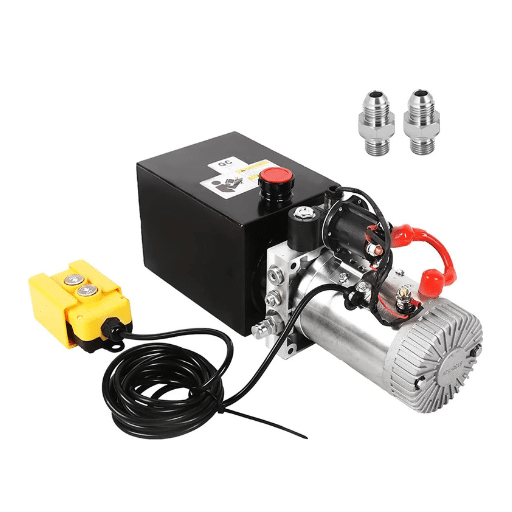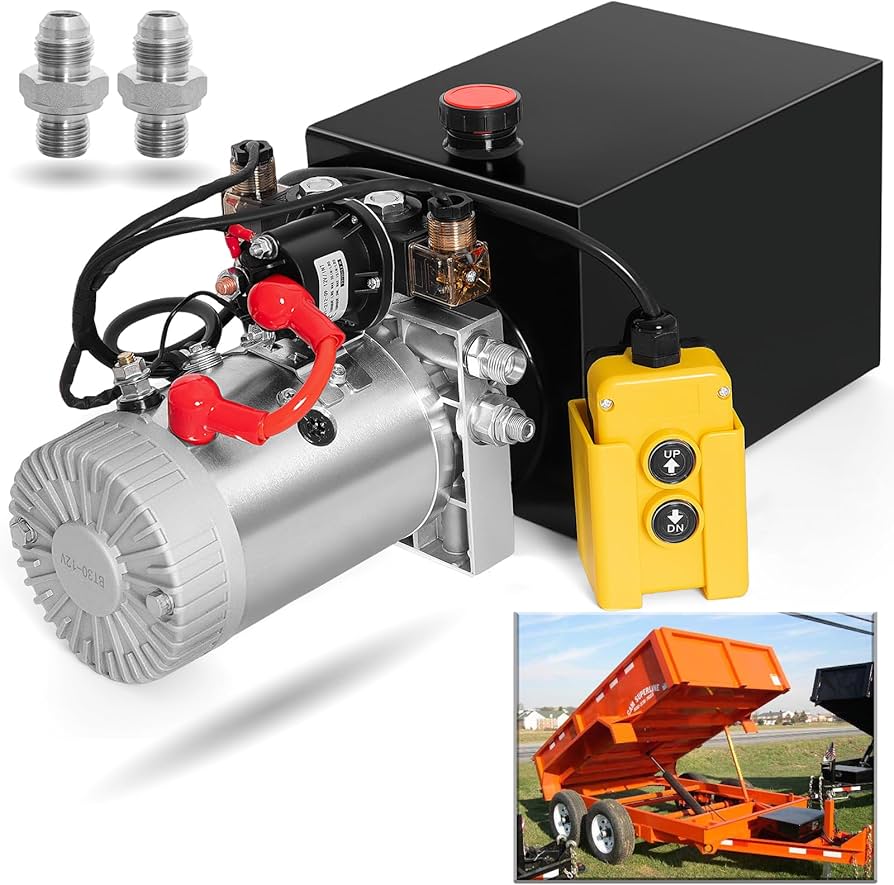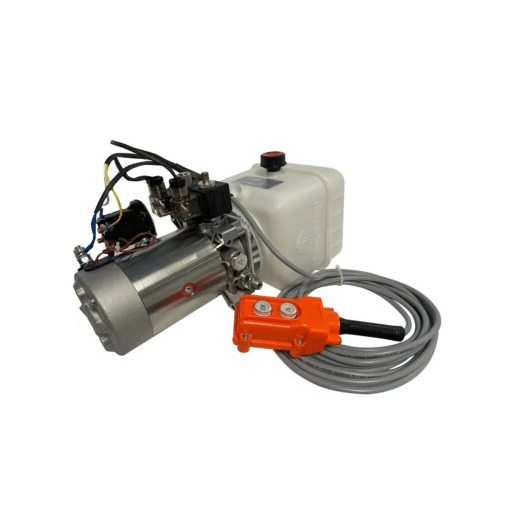12 Volt Hydraulic Pump for Dump Truck | Ultimate Guide
If you operate a dump truck, you know that reliability isn’t just a preference—it’s a necessity. At the heart of a dependable dumping mechanism lies a single, critical component: the 12 volt hydraulic pump. This ultimate guide cuts through the noise to give you a clear, practical understanding of how these pumps work, how to choose the right one, and how to maintain it for peak performance. Whether you’re a seasoned fleet manager or an owner-operator, getting this decision right directly impacts your truck’s uptime and your bottom line. We’ll dive deep into the specifications that matter, bypassing the marketing fluff to focus on real-world performance and durability.

What is a 12 Volt Hydraulic Pump and How Does It Power a Dump Truck?
A 12 volt hydraulic pump is an electrically driven unit that converts electrical energy from your truck’s battery into hydraulic power. This power is then used to create fluid pressure, which actuates the hydraulic cylinders responsible for lifting the dump body. For dump truck applications, this system is the muscle behind the lift. The process is straightforward: when you activate the pump, it draws hydraulic fluid from a reservoir and forces it under high pressure into the cylinder. This pressure extends the cylinder, smoothly and powerfully raising the truck bed. The entire operation hinges on the pump’s ability to generate sufficient pressure and flow rate, making its selection paramount.
Key Components of the System
Understanding the system helps in diagnosing issues and making informed purchases. The main parts include:
- The Pump Motor: The 12V DC electric motor that provides the rotational force.
- The Hydraulic Gear Pump: The core mechanism that creates the fluid flow and pressure.
- Directional Control Valve: Manages the flow of hydraulic fluid, directing it to lift, hold, or lower the bed.
- Hydraulic Cylinder: The ram that converts fluid pressure into linear motion to lift the load.
- Reservoir and Fluid: Stores and conditions the hydraulic fluid essential for the system.
Choosing the Right 12 Volt Hydraulic Pump: A Buyer’s Checklist
Not all 12 volt hydraulic pump units are created equal. Selecting the wrong one can lead to slow lift times, system failure, or unnecessary strain on your truck’s electrical system. Focus on these critical specifications to make a smart choice.
Performance Specifications That Matter
- Flow Rate (GPM): This determines how fast your dump bed will rise. A higher GPM means a faster cycle time. For standard dump trucks, look for a range between 1.5 to 3.5 GPM.
- Pressure Rating (PSI): This defines the pump’s lifting power. Higher PSI translates to a greater ability to lift heavier loads. Ensure the pump’s maximum pressure exceeds the requirement of your hydraulic cylinders.
- Motor Horsepower (HP): The motor’s power must be adequate to drive the pump against the required pressure and flow. An undersized motor will overheat and fail prematurely.
- Duty Cycle: This is perhaps the most overlooked yet vital spec. It indicates how long a pump can run continuously before it needs to cool down. For dumping multiple loads, a continuous duty pump is essential. Intermittent duty pumps are only suitable for very light, infrequent use.
Comparison of Common 12V Dump Truck Pump Models
| Model Type | Typical Flow Rate (GPM) | Max Pressure (PSI) | Recommended Duty Cycle | Best For |
|---|---|---|---|---|
| Standard Single-Stage | 1.8 – 2.5 | 2500 – 3000 | Intermittent | Light-duty, occasional use |
| High-Performance Two-Stage | 3.0 (low pressure) / 0.8 (high pressure) | Up to 3500 | Continuous | Heavy loads, frequent cycling |
| PTO-Driven Adapter Pump | Varies with engine RPM | 3000+ | Continuous | High-volume professional use |
The Critical Importance of Duty Cycle for Your Dump Truck
Many truck owners fixate on GPM and PSI but ignore the duty cycle, which is a recipe for a burned-out pump. The duty cycle specifies the operational time a pump can handle. An intermittent duty pump, for example, might be rated for 10 minutes of operation followed by 20 minutes of rest. For a dump truck that needs to unload several times per hour, this is completely inadequate. A pump with a continuous duty rating can run non-stop without overheating, making it the only viable option for serious commercial work. As noted in a fluid power systems guide by the National Fluid Power Association (NFPA), exceeding a pump’s thermal capacity is a leading cause of premature motor failure.
Installation Tips and Common Pitfalls to Avoid
Proper installation is as important as the quality of the pump itself. A poorly installed 12 volt hydraulic pump will underperform and have a shortened lifespan.
- Wiring: Use the correct wire gauge. Undersized wiring causes voltage drop, reducing power and efficiency. Always fuse the power line close to the battery.
- Mounting: Securely mount the pump to minimize vibration, which can loosen connections and damage internal components. The unit should be positioned in a well-ventilated area to aid cooling.
- Reservoir and Fluid: Ensure the hydraulic reservoir is properly sized and filled with the correct type of fluid. Contaminated or low fluid level is a primary cause of pump failure. According to a maintenance report from the U.S. Department of Transportation, proper fluid maintenance can extend hydraulic component life by up to 80%.
Maintenance Practices to Maximize Pump Longevity
A proactive maintenance routine saves money and prevents downtime. Follow these steps to keep your 12 volt hydraulic pump running smoothly for years.
- Regular Fluid Checks: Check the fluid level and condition before each use. Look for discoloration or a milky appearance, which indicates contamination or water ingress.
- Filter Changes: Replace hydraulic filters at the intervals recommended by the manufacturer. A clogged filter forces the pump to work harder, leading to overheating.
- Electrical Connection Inspection: Periodically check all electrical connections for tightness and corrosion. Loose connections create resistance and heat.
- Listen for Unusual Noises: A change in the sound of the pump—such as increased whining or grinding—is often the first sign of internal wear or cavitation.
Frequently Asked Questions
Q: How long does it take for a 12 volt hydraulic pump to lift a standard dump truck bed?

A: Lift time varies based on the pump’s flow rate (GPM) and the cylinder’s volume. A typical 2.5 GPM pump might take 60 to 90 seconds to lift a fully loaded 10-foot bed. A two-stage pump offers a “fast-lift” feature for empty or light beds, switching to high pressure for the heavy lifting, which optimizes overall cycle time.
Q: Can I upgrade my existing dump truck pump for faster lifting?
A: Yes, but with caution. Upgrading to a pump with a higher GPM will speed up lift times. However, you must ensure your truck’s electrical system (alternator and battery) can handle the increased current draw, and that your hydraulic hoses and valves are rated for the higher flow.
Q: What is the most common reason for a 12V hydraulic pump failure?
A: The two most common failure points are electrical and fluid-related. Electrical failures often stem from undersized wiring or poor connections causing the motor to overheat. Fluid-related failures are typically due to contamination, which scores internal surfaces and destroys the pump’s tight tolerances, or fluid breakdown from overheating.

Final Recommendations
Investing in a high-quality 12 volt hydraulic pump is investing in the reliability of your dump truck operation. Don’t be swayed by the lowest price alone. Prioritize a robust duty cycle, match the performance specs to your typical load requirements, and commit to a disciplined maintenance schedule. By understanding the engineering behind the pump and its role in your hydraulic system, you can make a confident purchase that will deliver power and performance for thousands of cycles to come.
Sources and Further Reading
- National Fluid Power Association – Fluid Power Basics
- U.S. Department of Transportation – Vehicle Maintenance Tips
- Society of Automotive Engineers (SAE) Standards for Hydraulic Systems (Commercial Vehicle)






